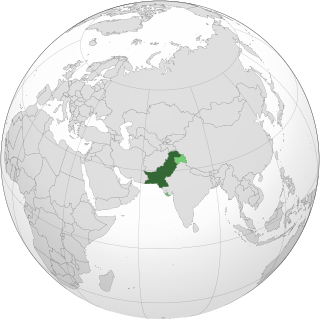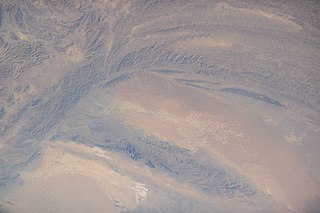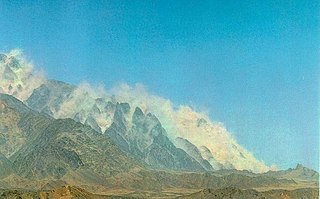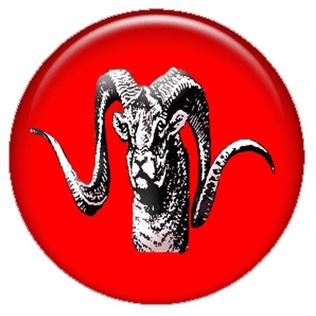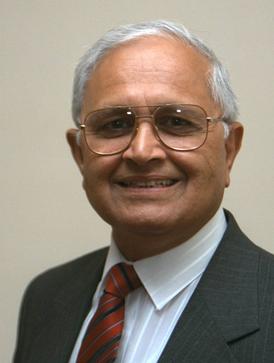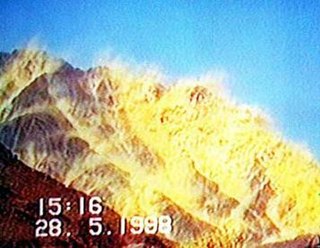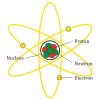Test preparations
Selection and planning
The Kharan Desert is a sandy and mountainous desert, with very high temperatures. [5] The region is characterised by very low rainfall, high summer temperature, high velocity winds, poor soils, very sparse vegetation and a low diversity of plant species; its average temperature are recorded 55 °C (131 °F) in summer and 2.5 °C (36.5 °F) in winter session (sources vary). [3] [6] [7] [8]
Safety and security required an isolated, remote, and inhabitant area with extreme weather conditions to prevent any possible Radioactive Fallout. [9] For this purpose, a three-dimensional survey was commenced by nuclear physicist Dr. Ishfaq Ahmad assisted by seismologist Dr. Ahsan Mubarak; it received final approval from Munir Ahmad in 1976. [10] Unlike the granite mountains, the PAEC requirement was to find a suitable site in a desert region with almost no wildlife to prevent any kind of mutation, and to study blast effects of the weapons. [11]
The weapon-testing sites were suspected to be located at Kharan, in a desert valley between the Ras Koh region to the north and Siahan Range to the south. [12] Subsequently, the Chagai-Ras Koh-Kharan were cordoned off, becoming restricted entry zones closed to the public. [12]
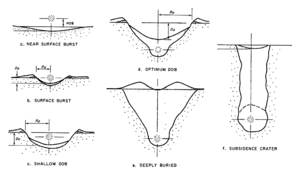
After PAEC officials clearing with Prime minister Zulfikar Ali Bhutto, the preparations and logistics matters were given to the Pakistan Armed Forces. [10] A secretly coded telegram was sent from the Prime Minister's Secretariat to V Corps Brigadier Muhammad Sarfraz. [10] A helicopter, was arranged for the civilian scientists by Sarfraz. [10] In 1977, Sarfraz was dispatched to the Military Engineering Service to commission engineering formations of the Pakistan military by General Zia-ul-Haq, the Chief of Army Staff. [10] The PAEC officials readily agreed that the secondary tests would be scientific in nature with the armed forces playing the engineering roles. [10]
The Special Development Works (SDW), assisted by the Corps of Engineers, Pakistan Army Corps of Electrical and Mechanical Engineering (PEME), and Frontier Works Organisation (FWO), spearheaded the engineering of the potential sites. [14] The military engineers were well aware of satellite detection, therefore the site at Kharan was constructed with extra cautions. [15] The SDW built around 24 cold test sites, 46 short tunnels, and 35 underground accommodations for troops and command, control and monitoring facilities. [16] The test site was 300 by 200 feet (91 by 61 m) and was L-shaped horizontal shafts. [17] Extensive installations of diagnostic cables, motion sensors, and monitoring stations were established inside the test site. [18] It took nearly 2–3 years for the SDW to prepare and preparations were completed in 1980, before Pakistan acquired the capability to physically develop an atomic bomb. [10]
After posting at the General Headquarters, Sarfraz transferred the work to Lieutenant-General Zahid Ali Akbar, the Engineer-in-Chief of the Pakistan Army Corps of Engineers. [19] The modernisation of the tests labs were undertaken by the FWO; the FWO uncredited work in the construction of the weapon-testings labs in Kharan Desert, and had supervised the entire construction on the sites along with the SDW. [20]
Final preparations were overseen by then-Lieutenant-Colonel Zulfikar Ali Khan and PAEC chairman Munir Ahmad, assisted by Dr. Ishfaq Ahmad, the Member (Technical) of PAEC. [12]

